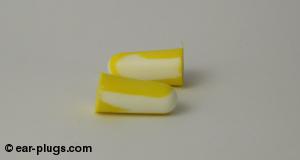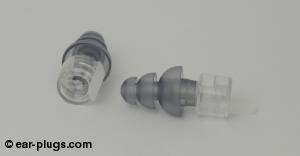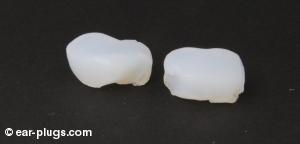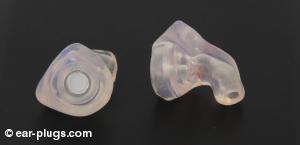What Earplugs to Give out for Free at Concerts
Earplugs are handed out for free at some concerts, festivals, and gigs. They shall help to protect the audience from hearing damage.
The concert goers are notorious for not bringing hearing protection with them and risking hearing damage.
What earplugs shall you distribute for free?
There are three main considerations: price, sufficiently strong hearing protection, and sound quality for the listener.
There are multiple kinds of ear plugs available. The price consideration rules out all but foam and wax earplugs.
Of the two, foam earplugs are cheaper, easier to use, and provide superior sound quality.
Therefore, the following discussion will focus on foam earplugs. The other types are only looked at in the last part of this article.
Which foam earplug shall you hand out?
The remainder of the article is structured as follows:
- Why to Hand out Earplugs for Free
- Strength of Hearing Protection
- Sound Quality
- Visibility
- Price
- Packaging
- Brand & Product Recommendations
- Other Than Foam Earplugs
Why to Hand out Earplugs for Free
There are a few possible reasons why to hand out earplugs for free.
The most compelling reason is compassion for the attending persons. To enable them to avoid damaging their hearing.
Other reasons can include laws and regulations requiring a concert organizer to do so. Or the risk of liability lawsuits resulting in large payments. In such a case it could help if you can show that you were handing out earplugs for free and recommend ding your customers to wear them.
It can also be advantageous for marketing purposes: to make the impression of an organization who cares for its clients.
People often come to the concerts without thinking about buying hearing protection in advance. And once they are there, it is too late. Even if they realize it too loud and even when they start to feel pain in their ears, few will abort and go home. Most will stay because they tell themselves that they paid for it or because it will be okay, or at least so they think.
When young people grow up and attend their first concerts, they have not had a chance to learn that they should bring hearing protection with them. For many that comes with getting older and starting to think more long term. And the change towards starting to wear earplugs is easier done when they are available at concerts than when having to buy them in advance.
Strength of Hearing Protection
Foam earplugs provide strong hearing protection. Even the weakest foam earplugs are still stronger than most other types of earplugs.
Almost all foam earplugs should provide sufficient protection from hearing damage.
Almost all foam earplugs have stronger than 20dB sound protection at each frequency measured according to the US (ANSI S3.19-1974) or European (EN-352-2:2002) standards.
Sound Quality
The sound quality of foam earplugs is often not good when compared to (much) more expensive alternatives.
But there are foam earplugs available with an acceptably high level of sound quality.
It is important to chose the right brand of foam earplugs. The difference between different brands of foam earplugs is huge.
A first step is to look for a foam earplug with as flat an attenuation curve as possible. This means that the earplug reduces the sound loudness at each sound pitch about the same amount. Or in other words, this means that the sound reduction in decibel (dB) is the same for each sound frequency in Herz (Hz).
There are no foam earplugs available with a perfectly flat attenuation curve, but only better and worse plugs.
The attenuation curve tells part of the story and gives a good first impression.
But a flat attenuation curve is not everything. We, for example, like the sound quality of the Bilsom 303 foam earplug better than of the Laser Lite and the later has a slightly flatter attenuation curve.
Why do we like the Bilsom 303 better than the Laser Lite? We tested them both while listening to loud music.
Visibility
Some concert goes and clubbers do not wear earplugs for resons of social pressure. Maybe they do not want to be perceived as uncool. Or maybe they simply feel awkward being the only one who wears earplugs while the majority does not.
Such people can be helped by choosing flesh colored earplugs rather than screaming aggressive yellow or green. The idea is to choose a discreet color. Darker colors are more discreet than bright colors.
Choosing a discretely colored earplugs might improve the odds that people actually use them.
Price
Foam earplugs are a very cheap type of earplugs.
They cost around USD 0.15-0.25 for a pair. That is USD 150-250 for 1,000 pairs. Or if your concert has a really large audience then the cost for 10,000 pairs translates to USD 1,500-2,500. But keep in mind that not every attendee will use one of your earplugs, most likely only a small minority will. The costs for one single concert are not that large.
Packaging
The easiest way to distribute earplugs is when the packaging contains one pair each.
Brand & Product Recommendations
We currently like the Howard Leigth Bilsom 303S best followed by the Howard Laser Lite. Both are shown in the pictures below.


They have the best sound quality of all the foam earplugs we have tested.
They provide strong hearing protection.
They are not discretely colored, but we give the sound quality the lead in our decision.
The pricing is also in normal range for foam earplugs.
The Bilsom 303 is a popular earplug and sold worldwide.
Other Types Than Foam Earplugs
There are some other types than foam earplugs available:
Reusable Earplugs
An example is the ER20XS as shown in the picture below.

Compared to foam earplugs, these earplugs provide less sound protection, some have significantly better sound quality, but they cost around USD 5 - 20 for a single pair. The less sound protection might be desired, because foam earplugs are rather strong, but many reusable earplugs are rather weak.
Wax or Silicone Earplugs for Self-Molding
The Mack's Pillow Soft as shown in the picture below is an example.

Compared to foam earplugs these earplugs are more expensive, more cumbersome to use, and provide only inferior sound quality compared to a good foam earplug.
Professional Musician Earplugs
An example is the Etymotic Research ER25 as shown in the picture below.

Compared to foam earplugs, these earplugs provide less sound protection (they provide just the right amount), have exceptionally better sound quality, cost more than USD 100 for a pair, and must be pre-fitted to the individual ear weeks in advance.
Posted on
Last updated on